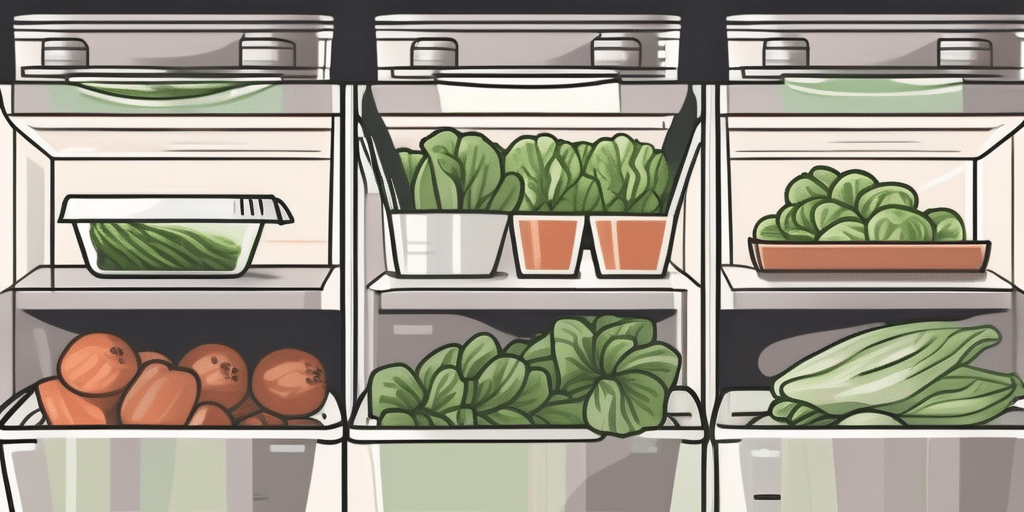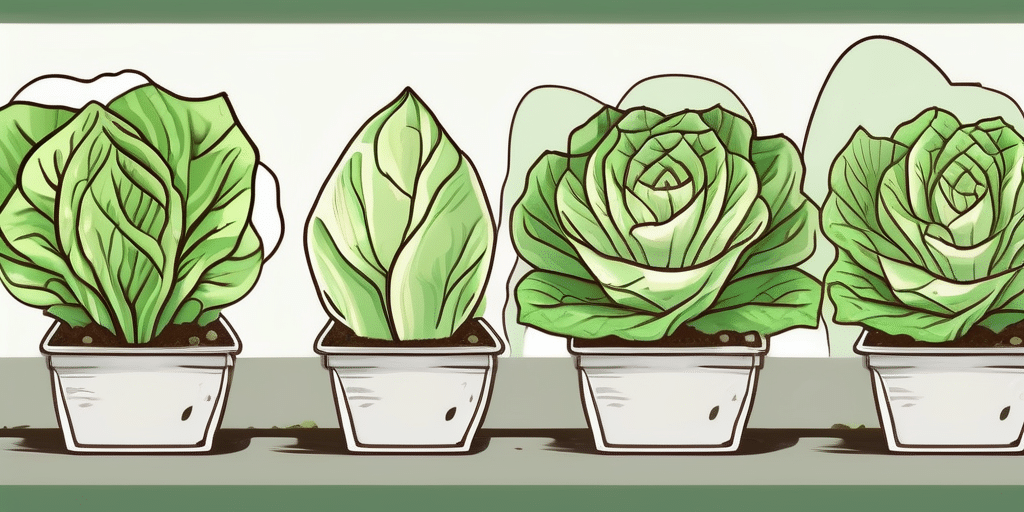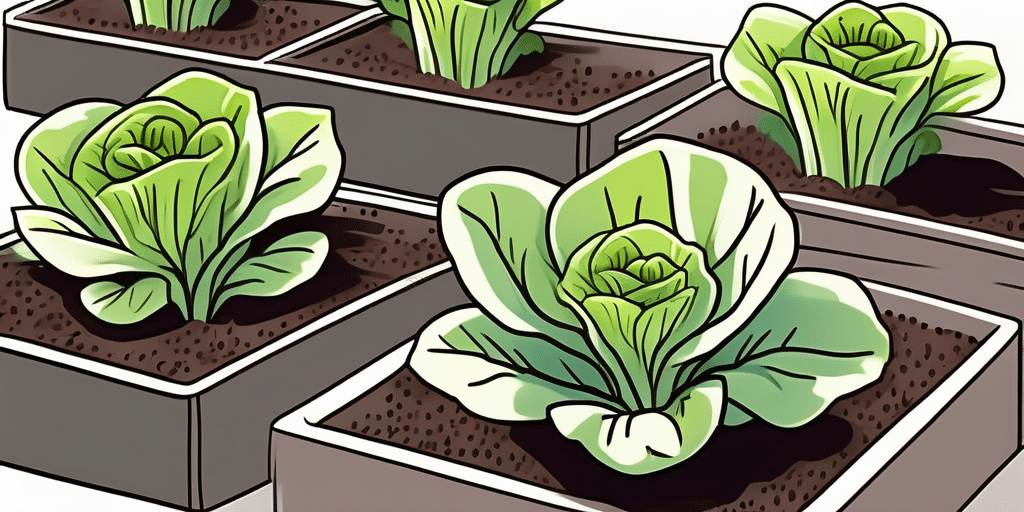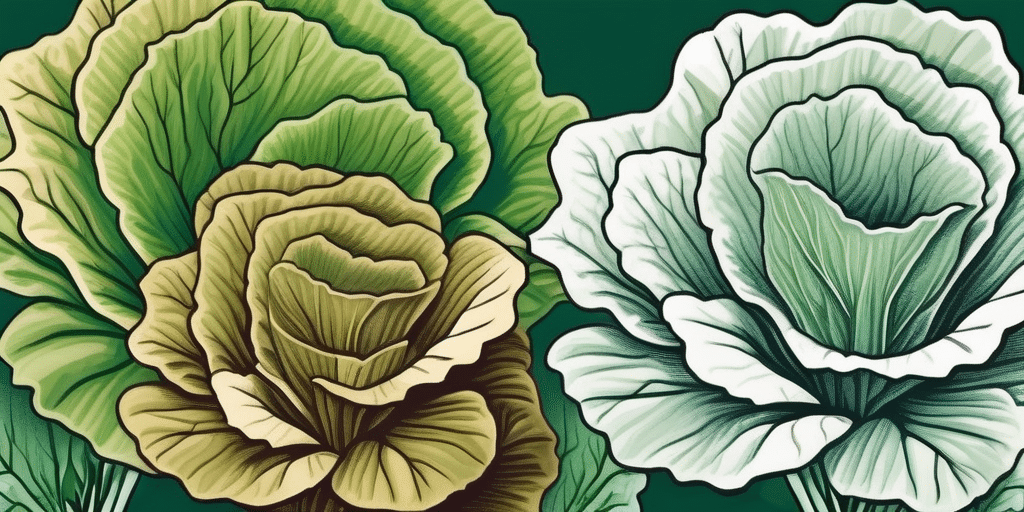Oak leaf lettuce is a delightful and nutritious variety of lettuce that thrives in the favorable conditions of Tennessee. With its tender leaves and mild flavor, it’s no wonder that this leafy green is a favorite among salad enthusiasts. In this article, we will dive into the details of when to plant oak leaf lettuce in Tennessee and how to grow it successfully.
Climate & Hardiness Zones in Tennessee
Tennessee falls under USDA hardiness zones 6a to 7b, which offer a moderate climate suitable for growing oak leaf lettuce. The state experiences hot and humid summers, while the winters are relatively mild with occasional freezing temperatures. These conditions provide an excellent environment for the growth and cultivation of this leafy vegetable.
Due to the diverse topography of Tennessee, the state showcases a variety of microclimates that can influence plant growth. The eastern part of the state, characterized by the Appalachian Mountains, tends to have cooler temperatures and higher precipitation levels compared to the western regions. This variation in climate within the state allows for a range of crops to be cultivated, from cool-season vegetables in the mountainous areas to warm-season crops in the lower elevations.
Furthermore, Tennessee’s location in the southeastern United States exposes it to weather patterns influenced by the Gulf of Mexico and the Atlantic Ocean. This proximity to large bodies of water can lead to increased humidity levels, which may impact plant diseases and pest infestations. Farmers and gardeners in Tennessee need to consider these factors when planning their planting schedules and pest management strategies to ensure successful crop production throughout the year.
When to Plant Oak Leaf Lettuce in Tennessee
The optimal time to plant oak leaf lettuce in Tennessee is during the cooler months, either in early spring or fall. It’s best to avoid the scorching heat of summer, as lettuce prefers temperatures between 45°F and 75°F.
If you choose to sow your seeds in the spring, aim for a planting date around mid-March to mid-April. This timing allows the lettuce to mature before the intense heat arrives. However, be cautious of late frosts as they can damage young seedlings.
For a fall crop, sow the seeds in late summer, around mid-August to early September. This timing allows for cooler temperatures and extends the growing season into the fall. Planting in succession, every two to three weeks, can ensure a continuous supply of fresh oak leaf lettuce throughout the season.
Remember to check your local weather forecasts and adjust planting dates accordingly. Climate variations within the state might require slight modifications to the suggested planting times.
When selecting a location for planting oak leaf lettuce, choose a spot that receives partial shade during the hottest parts of the day. This will help prevent the lettuce from bolting, which is when it prematurely goes to seed due to stress from high temperatures.
Before planting, enrich the soil with compost or well-rotted manure to provide the lettuce with essential nutrients for healthy growth. Ensure the soil is well-draining to prevent waterlogged conditions that can lead to root rot.
Consider using row covers or mulch to regulate soil temperature and moisture levels, especially during extreme weather conditions. These protective measures can help maintain a stable environment for the lettuce to thrive.
When to Harvest or Pick Oak Leaf Lettuce in Tennessee
Harvesting oak leaf lettuce is an exciting and rewarding experience. The best time to harvest this leafy green is when the leaves have reached a desirable size, usually between 4 to 6 inches in length. At this stage, the lettuce leaves are tender, flavorful, and full of nutrients.
When picking oak leaf lettuce, it’s essential to use clean, sharp scissors or garden shears to avoid damaging the plant. Cut the outer leaves from the base, allowing the inner leaves to continue growing. This method promotes regrowth and ensures a continuous harvest throughout the growing season.
If you prefer to harvest the entire plant at once, make sure to do so before the lettuce starts to bolt or flower. Bolting is the natural process where the lettuce transitions to producing flowers and seeds. Once this occurs, the leaves become bitter and less enjoyable to eat.
Oak leaf lettuce is a cool-season crop that thrives in the moderate climate of Tennessee. Planting oak leaf lettuce in early spring or late summer allows for optimal growth and flavor development. This variety of lettuce is known for its delicate, oak-shaped leaves that range in color from light green to deep red, adding a pop of color to salads and dishes.
When harvesting oak leaf lettuce in Tennessee, it’s important to check the moisture levels in the soil. Consistent watering is crucial for preventing the lettuce from becoming bitter or developing a tough texture. Mulching around the base of the plants can help retain moisture and regulate soil temperature, ensuring a bountiful harvest.
Frequently Asked Questions
Q: Can I grow oak leaf lettuce in containers?
A: Absolutely! Oak leaf lettuce is well-suited for container gardening. Choose pots or containers that are at least 6 inches deep and provide proper drainage. Place the containers in an area that receives partial sunlight and water regularly to keep the soil evenly moist.
When growing oak leaf lettuce in containers, it’s essential to use a high-quality potting mix that is rich in organic matter. This will provide the necessary nutrients for your lettuce to thrive. Additionally, consider incorporating a slow-release fertilizer to ensure continuous feeding throughout the growing season. Regularly monitor the moisture levels in the soil to prevent drying out, especially during hot summer months.
Q: How do I prevent pests from damaging my oak leaf lettuce?
A: Pests such as slugs, snails, and aphids can pose a threat to your oak leaf lettuce crop. To deter these unwanted visitors, consider using natural methods such as companion planting with herbs like mint or basil. You can also create physical barriers like row covers or apply organic pest control solutions.
In addition to companion planting, practicing good garden hygiene can help prevent pest infestations. Remove any debris or weeds that may attract pests, and regularly inspect your plants for early signs of infestation. By promoting a healthy garden ecosystem, you can reduce the likelihood of pest damage to your oak leaf lettuce.
Q: What are some delicious ways to enjoy oak leaf lettuce?
A: Oak leaf lettuce’s delicate leaves are perfect for adding freshness and crunch to salads. You can also use them as a nutritious bed for sandwiches or wraps. For a unique twist, try sautéing the leaves lightly with garlic and olive oil for a warm and flavorful side dish.
For a refreshing summer meal, consider pairing oak leaf lettuce with seasonal fruits like strawberries or peaches in a vibrant salad. The sweet and tangy flavors will complement the crisp texture of the lettuce leaves, creating a delightful culinary experience. Experiment with different salad dressings and toppings to elevate the flavors and textures of your oak leaf lettuce creations.
Now that you have the knowledge and tips on when to plant and how to grow oak leaf lettuce in Tennessee, it’s time to get your hands dirty and enjoy the bountiful harvest of this delightful leafy green. With a little care and attention, you’ll soon be savoring the crisp and nutritious leaves of your own homegrown oak leaf lettuce.
Join the How to Grow Everything Community
Ready to transform your green thumb into a bountiful garden? Subscribe for free to How to Grow Everything and start building the garden of your dreams today! Receive personalized gardening advice tailored to your Tennessee location, grow zone, and experience level. Our family is dedicated to helping you grow not just oak leaf lettuce, but everything your heart desires, with the best gardening tips and special offers delivered straight to your inbox. Join our community now and grow with confidence—100% free, no spam, just pure gardening gold!






